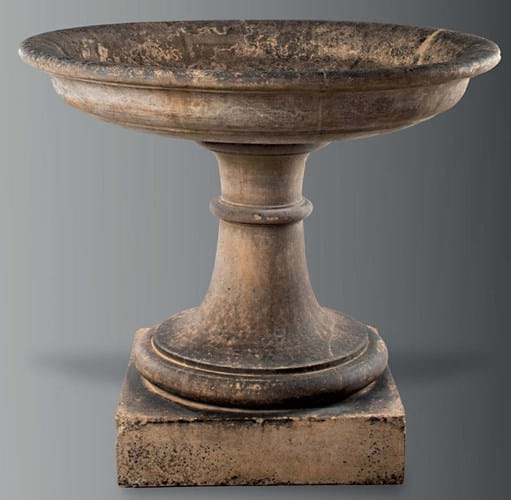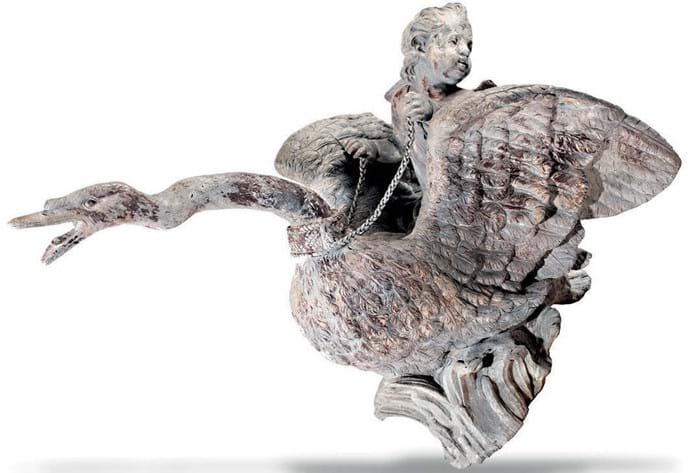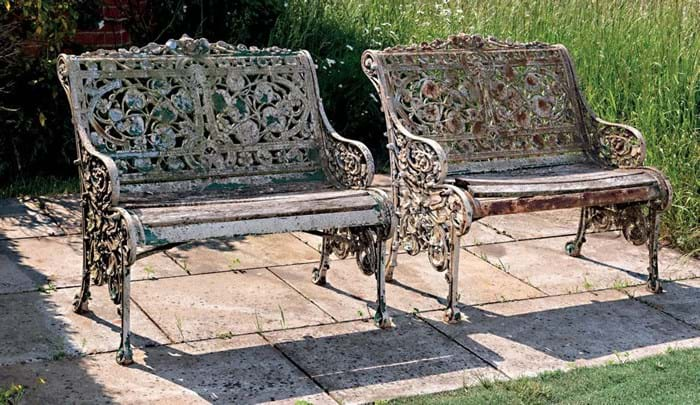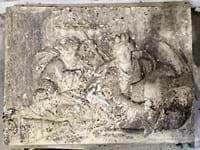The renowned qualities of Eleanor Coade’s artificial stone - endurance and facilitating delicate modelling - were exemplified in an 18th century sundial offered at Summers Place Auctions (25% buyer’s premium).
Measuring 4ft 10in (1.49m) overall, the figure, seated on a rock and holding an hour glass, was stamped to the base Coade 1792 and fitted with a fine bronze sundial on his head engraved J. Coggs London fecit.
Probably unique, it appears to be the one noted at a London specialist dealership in the British Sundial Society’s April 1997 bulletin in which I. Coggs (sic) is recorded as fl.1730-59 and the figure had its 18th century classical title, Kronos.
In the Summers Place catalogue for the Billingshurst sale on September 26 it was described as Father Time, a less dark figure than the Greeks’ god of time who was given to eating his own children lest they kill him (spoiler alert - one did). Pitched at £20,000-30,000, it sold to a North American collector at £50,000.
Secret revealed
The secret formula used by Mrs Coade (as spinster Eleanor was always called) was lost after the firm dwindled following her death in 1821 and folded in 1846. It was finally revealed as a mix of ball clay, quartz and soda glass by analysis in the 1980s.
Besides her factory’s long-lived output, Mrs Coade’s memory lived on in the mid-Victorian craftsmen she influenced, notably Mark Henry Blanchard and John Marriott Blashfield.
Blanchard, who served his apprenticeship with the Coade Company before setting up on his own in 1839, produced similar reconstituted stone which, as was then the fashion, he called terracotta.
His fame brought private and public commissions until the late 19th century when the factory diversified into tiles and building materials.
The West Sussex sale included a Blanchard stoneware sundial formed as a 4ft 2in (1.26m) circular column entwined all over with ivy leaves and berries rising to a circular sun dial. Dated c.1860 and bearing a maker’s stamp, it doubled the mid-estimate going to a UK collector at £7200.
Another c.1860 Blanchard rarity was the figure of Erin, a 5ft 3in (1.7m) personification of Ireland as a seminude classical female figure holding a harp above her head. She took a mid-estimate £8500 from a North American dealer. It was a rare trade victory, with most top-range pieces going to UK and US collectors or dealers bidding for clients.
John Marriott Blashfield wrote in his 1855 publication History and Manufacture of Ancient and Modern Terracotta that he had been inspired to make artificial stoneware after seeing Blanchard’s prize-winning pieces at the Great Exhibition of 1851.
At Summers Place his massive 4ft 3in high x 4ft 11in diameter (1.29 x 1.5m) tazza sold to a UK dealer at a lower-estimate £5000.
Blashfield had a stellar but fairly short career. He over-reached himself supplying decorative stone for Boston’s new Museum of Fine Arts and together with some unwise property speculation this led to his company’s collapse in 1875.
Copy of Bernini masterpiece
From reconstituted stone to carved white marble and an impressive 19th century copy of Bernini’s 1622-25 masterpiece, Apollo and Daphne. Now in the Galleria Borghese, according to Bernini’s biographer ‘all Rome rushed to view it as though it were a miracle’ when it was first unveiled.
Bidders at Summers Place were also impressed by the 4ft 1in (1.24m) high group on a revolving 3ft (93cm) high, black-veined marble pedestal copy. It was pitched at £12,000-18,000 but sold at £22,000 to a UK dealer.
Metalware also made its mark, most notably the first lot offered: a rare cast lead figure of a cupid and swan by John van Nost the Younger (1712-87), nephew of his highly rated namesake who had come to England from Belgium. Dated to the second half of 18th century, the 3ft 8in (1.12m) high group sold to an American collector at a mid-estimate £10,000.
Coalbrookdale cast-iron, as ever popular a brand name as Coade stone, was well represented led by a pair of Nasturtium pattern cast-iron seats. Dated c.1870, the 3ft 3in (1m) wide seats were stamped CB Dale And Co with diamond registration marks. They tripled the top estimate, going to a North American collector at £7500.
Large animalier bronzes, 48 of which came from a private UK collection, dominated the modern offering. Going well above estimates were a signed life-size cheetah numbered 2/3 by Mark Coreth at £70,000 and Geoffrey Dashwood’s 2009 monumental 8ft 10in (2.7m) tawny owl at £62,000.
One of Nic Fiddian-Green’s famous horse-head bronzes, a 10ft 2in (3.10m) high signed 2009 edition of three Fire Bronze, made a mid-estimate £42,000.
A 7ft 5in (3.5m) edition of probably his most iconic work, Horse At Water, examples of which are at Marble Arch, Goodwood and Glyndebourne, was among the very active after-sales market where it sold on its lower £100,000 estimate.




















